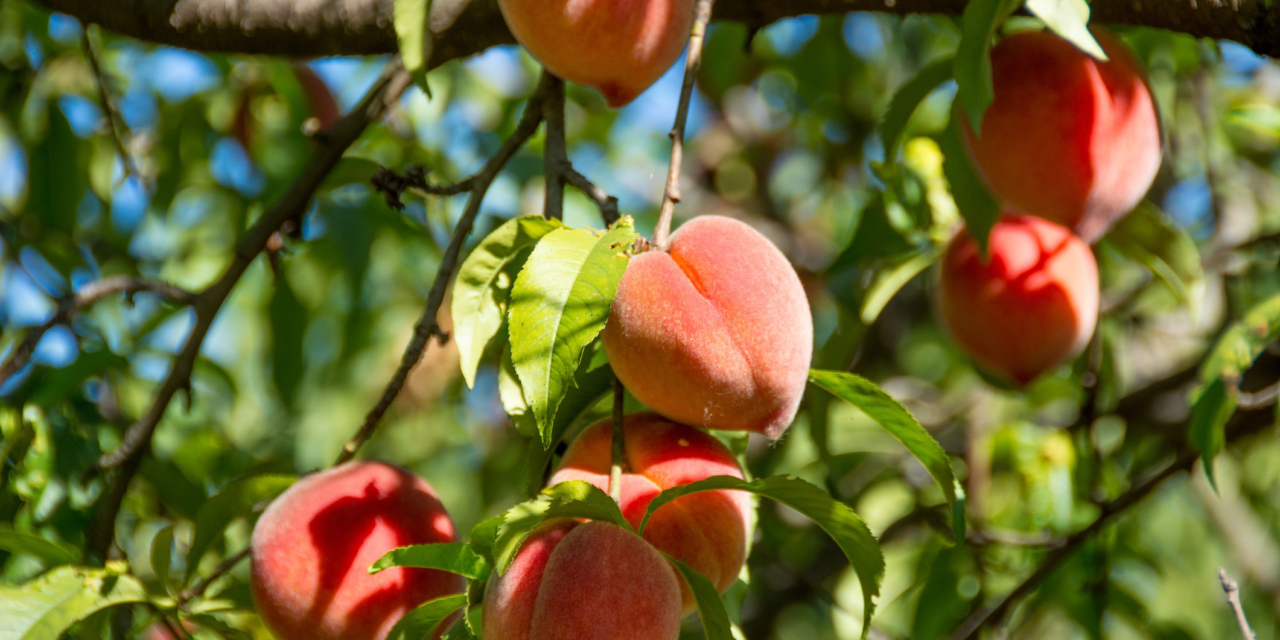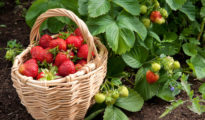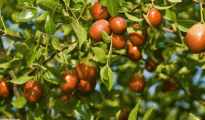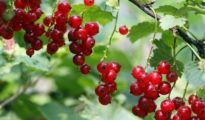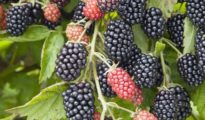Looking to grow your own fruit? Now is the time! Look no further than these 4 low maintenance fruit trees that anyone can grow! During these very hard and uncertain times, a lot of people are turning to self-relying ways. One of these ways is to grow your own food! In this article, we'll talk about the best low maintenance fruit trees anyone can grow.
Is there a better feeling than growing your own food and then harvesting it? We think not! That's why these low maintenance fruit trees should be at the top of your list! Easy to grow vegetables aren't the only ones that matter – fruits should be a part of your garden as well.
If you're going to grow your own fruit trees, be sure to save this article on how and when to harvest summer fruits.
There is a large variety of fruit trees you can grow, and the ones you choose will depend on a few different things, such as your climate, how much space you have, and which fruits you enjoy consuming. Depending on the variety of fruit trees you choose to grow, they can be self-pollinating or may require a pollinator. Self pollinating fruit trees include peaches, nectarines, apricots, and sour cherries. Fruit trees that need a pollinator include sweet cherries, plums, pears, and apples. It may seem like a lot of work to grow fruits that need a pollinator, but in reality, it's not.
Low Maintenance Fruit Trees You Can Grow Right Now
So whether you have a small garden or an entire orchard, check out these low maintenance fruit trees that anyone can grow!
Plum Trees:

Plum trees are one of the easiest fruit trees you can grow because they require very little maintenance and there are plenty of varieties suited to your climate. Plum trees need a pollinator, so be sure to plant at least two plum trees in order for the trees to bear fruit. Choose from different varieties such as European, Damson, or Japanese.
- Plant seeds or seedlings in well drained soil.
- Choose an area with full sun and lots of space so that your plum tree can grow.
- Make sure that your soil has a pH of 5.5 to 6.5
- If possible, try growing the European variety, as they are self-fruiting and don't need to plant several trees to get fruit.
- Make sure to plant somewhere where your tree can grow – plum trees can reach a height of 16 feet.
- Apply 1 pound of organic fertilizer in March during its first and second year.
- Apply 1 cup of calcium nitrate in May during its first and second year as well.
- After the first two years, apply 2/3 cup of calcium nitrate in March and August.
- Give your plum tree plenty of water, especially during its growing season.
- Lay mulch around to keep soil moist.
Learn more about how to grow plum trees.
Peach Trees
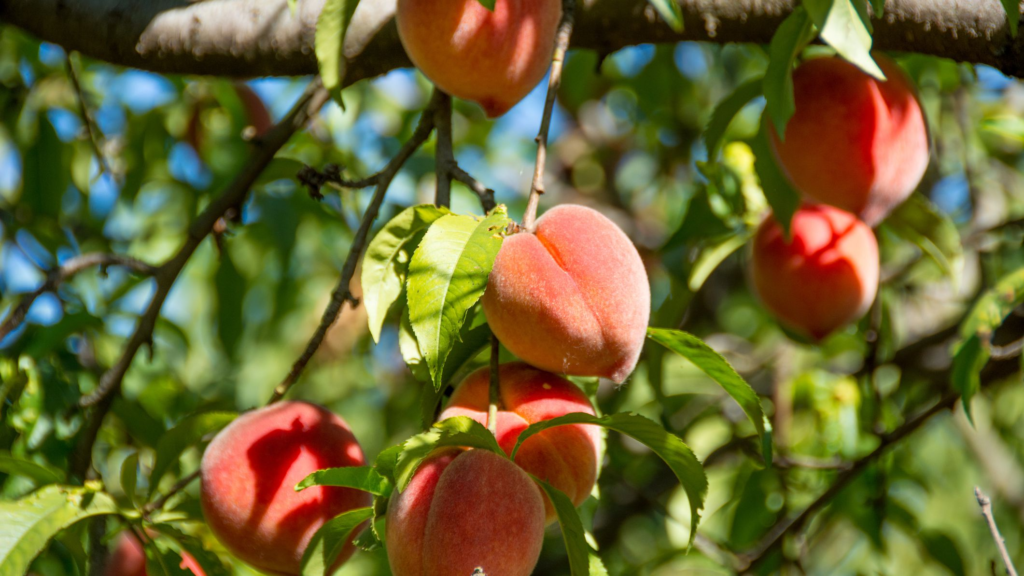
Peach trees are best suited for those who live in USDA zones 5 through 9, so long as the winter temperatures don't dip below -20F. Plant peach pits in good quality, well drained soil, and place in a sunny area. The great thing about peach trees is that they come in regular, standard size, and also in dwarf varieties. If you don't have much space in your garden, dwarf peach trees will be perfect.
- Choose a good quality, well draining potting soil and add is some organic matter as well as compost.
- Plant in the fall.
- Plant the peach pit 3-4 inches deep and cover it with about an inch or so of of straw or mulch. This is so that your peach pit will be protected during the winter.
- Water immediately after planting, and then only once a week, once the soil is dry.
- By spring, you should see a seedling sprout out. If not, your peach pit may have just been a dud.
- You can also start your peach pit indoors in a small container, and then transplant it outdoors in the spring.
- Be very patient when planting your peach seed, as seedlings can take anywhere from a few weeks to a few months to germinate.
- If your peach seed does not germinate, try using a different variety of peach.
- Germination is often the most difficult task, but once your peach seed has germinated, it's smooth sailing from then on!
- Transplant your seedlings directly into the ground or into pot just like any other fruit tree. Water only when soil is dry, and do not water in the winter.
- Keep soil protected with mulch or straw.
- Fertilize regularly during growth.
- Prune the peach tree back, cutting off any side branches. Pruning encourages growth and promotes tree health.
Learn more about how to grow peach trees!
Pear Trees:

Pear trees give you sweet and delicious fruit, but they are very slow bearing, so don't expect any fruit for about two or three years. That being said, if you have a little patience, pear trees can greatly reward you with years and years of delicious fruit. Pear trees need to be pollinated, so be sure to plant at least two trees to bear fruit. Another great thing about pear trees is that they're very low maintenance and are resistant to pests and diseases.
- Start by collecting a pear, a plastic cup, four toothpicks, a knife, and some good quality potting soil.
- Pour some water into the plastic cup and set it on your counter.
- Remove the seeds from the pear. There should be about 8 seeds.
- Dry 4 of the seeds out on a plate for a couple of days, preferably in a warm spot. Then, transfer the dried seeds into a plastic bag and store in the fridge. These seeds can be stored for a few years in the fridge in case you decide to plant more pear trees in the future!
- Place the other 4 seeds into the cup of water and place cup in the fridge for about 4-5 days.
- After 4 or 5 days, removing the cup with the seeds from the fridge. Any seeds that are floating are no good, so toss those out.
- Drain the water and fill the cup with all purpose potting soil.
- Place a seed in each corner of the cup.
- Place a toothpick next to each seed to mark its spot.
- Water well and wait 2-3 weeks for seedlings to appear. Once your seedlings have four or more true leaves, transplant them to a regular sized pot.
- Once the seedlings have outgrown their pot, transplant the tree outdoors, provided that the weather is warm (you can start in early spring as soon as the last frost is over).
- You can also transplant the seedlings to a bigger pot and simply move the pot outdoors and indoors according to the weather.
- Make sure you place your tree in a sunny spot, and where there aren't many trees or other plants around.
- Water your pear tree regularly.
Learn more about how to grow pear trees!
Cherry Trees:
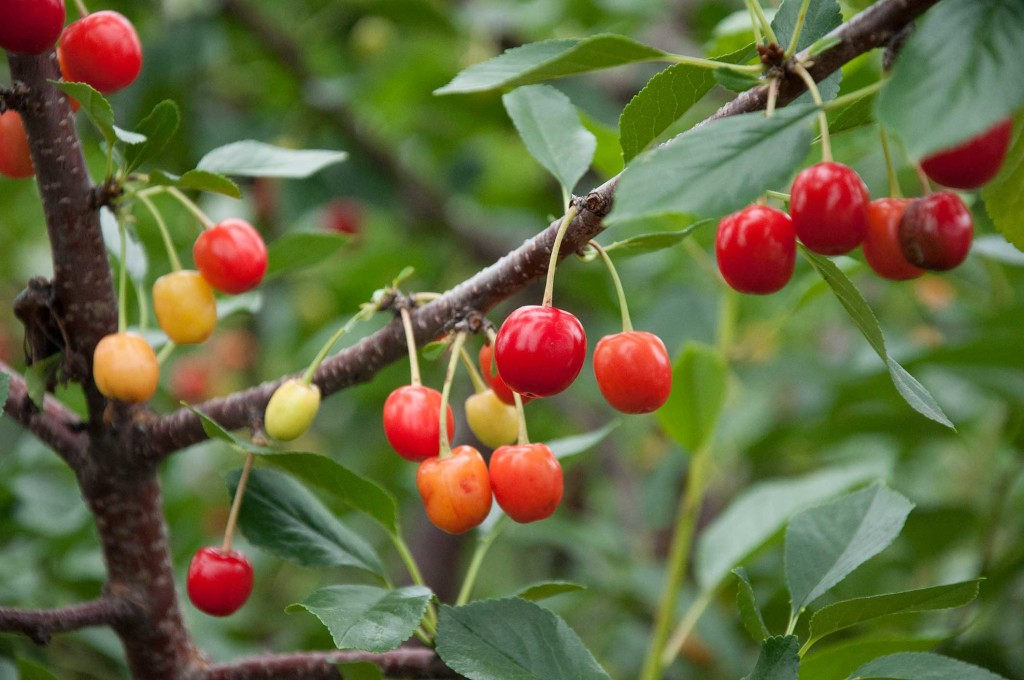
Cherry trees are great to grow in your garden because they're low maintenance, and will provide you with years of fruit. You can also opt to grow dwarf cherry trees which is a great option for those with smaller gardens. If you choose to grow sweet cherries, bear in mind that they need to be pollinated, which means you'll need to plant 2-3 trees. Thankfully, there are now dwarf varieties that you can grow which are self-pollinating.
- Save the pits from cherries and place them in a bowl of warm water. Let them soak for about 5 minutes, and scrub off any remaining residue.
- Lay the pits out on a towel and allow to dry for 3-5 days. Once dried, transfer the cherry pits to a container and place them in the refrigerator for 10 weeks.
- The reason you need to keep the pits in the fridge for 10 weeks is because cherries need to go through a cold or stratification period. This normally occurs during the cold, winter months, prior to germination in the spring.
- After the 10 weeks have gone by, take the pits out of the fridge, and allow them to come to room temperature.
- Put 2 or 3 pits into a small container that is filled with potting soil and water well. Make sure you use drained soil.
- Keep the soil moist at all times.
- Once the seedlings are about 2 inches tall, go ahead and thin them to remove the weakest plants. Leave the sturdiest seedling in the pot.
- Keep the seedling in a sunny spot, indoors, until all danger of frost has passed.
- Once all danger of frost has gone, you may go ahead and transplant outdoors.
- Space each tree about 20 feet apart.
- Fertilize your cherry tree about once a year.
- Use a low-nitrogen fertilizer in early spring. A cherry tree will start to produce fruit in its fourth year. This may seem like a long time, but it is absolutely worth it!
- Once your cherry tree has matured, it will keep producing juicy cherries season after season!
So now that you know how to grow your own fruit trees, it's time to roll up your sleeves and get out to the garden! Have any questions? Drop a comment below and we'll get back to you!
Like this post? Don't forget to share, Pin, or comment below 🙂

